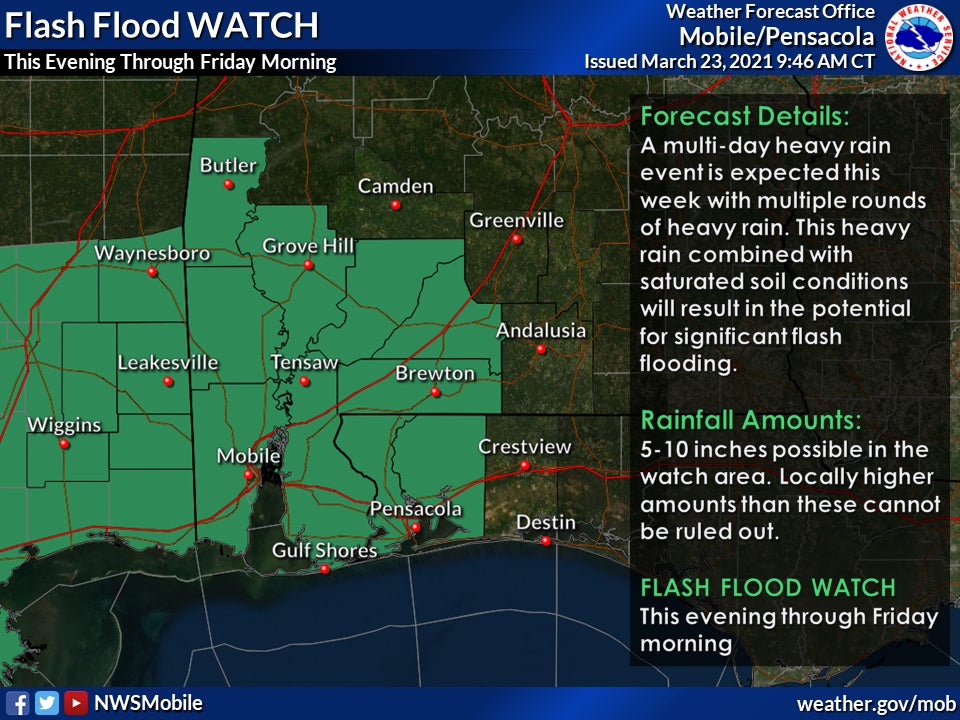Hike in property tax could help funding
Published 9:04 am Thursday, February 13, 2003
By By PAUL KEANE – Special to The Standard
(Editor's Note: This is the third in a six-part series looking at the funding crisis facing public schools in Escambia County. Today's installment looks at the issue of property taxes.)
Question: What could raise more than $1 million for local schools, would cost the approximate amount of two fast-food lunches a month and hasn't been raised countywide in more than 77 years?
Answer: Ad valorem taxes for schools in Escambia County.
The hot topic of property taxes to help fund education in the county has been discussed, studied and could be decided on by voters by late spring or early summer.
A direct ad valorem tax for education has not been passed in Escambia County since 1925. Through an array of mergers of districts, an oil and gas severance tax and support from cities such as Atmore, the rate hasn't needed to be increased, officials say.
A decrease in the oil and gas payments, along with three hard years of proration, has forced residents and school officials to look at increasing the tax.
The history of the tax itself is interesting.
In 1924, a 6 mill ad valorem tax was in effect, with 3 mill being a countywide tax and the other 3 mill being a district tax. At that time, Escambia County was comprised of 38 school districts.
A year later, 1925, the ad valorem tax for schools was increased to 7 mills, with four going to the county and three to the districts.
In 1926, the 38 school districts were consolidated into five districts -- District 1, 2, 3, A (Atmore) and B (Brewton). The Brewton School District is an independent city system and no ad valorem taxes levied in Brewton go to the county school system. District A was the City of Atmore and its schools.
Forty years later, in 1966, District A (Atmore) merged with the county (Districts 1, 2, and 3), resulting in the current county system. About that same time, the City of Atmore enacted a special 5-mill ad valorem tax levy for schools within the Atmore city limits. That tax continues to this day.
Atmore is the only city in Escambia County that levies a special ad valorem tax for schools. While the city recently voted to rescind its contribution of a portion of the sales tax to schools within the city limits, the ad valorem tax remains intact, as voters would have to approve rescinding that measure.
The overall tax rate in Atmore is 35 mills. Brewton also has 35 mills, with 5 mills going to the Brewton City School District. East Brewton has a total millage of 37, with no extra going to schools.
Flomaton millage is 35, with no extra for schools, and unincorporated parts of the county pay 25 mills, with 7 mills going to schools.
School officials are asking for at least a 10 mill increase for schools, an amount they say would help get the district past proration and keep it from having to look at deep cuts or possible school closures.
Based on Escambia County's Tax Year 2002 Abstract, an additional 7 mills tax would generate $1,719,653.04 a year total, with county schools receiving $1,328,153.56 and the balance going to Brewton School City Schools. An 8 mills increase would generate $1,965,317.76 total, with $1,517,889.78 going to county schools, and a 9 mills increase would generate $2,210,982.48, with $1,707,626.01 going to county schools. A 10 mill increase would generate $2,456,647.20, with $1,897,362.23 going to county schools.
That final amount is what school officials say is needed to make up for three years of proration and rebuild the reserves every school system is required to have in place.
Those estimates are based on current property appraisals. Any new business or industry that locates to Escambia County would increase those amounts, as no property is exempt or abated from property taxes for education.
When broken down on a monthly basis and applied to a mortgage or rent payment, the amount is not that steep per household.
County Administrator Tony Sanks said that a home appraised at $100,000 would not suffer that great of an increase in taxes.
Property is also taxed as a percentage of its appraised value. Residential, farm and forest lands are taxed at 10 percent of the appraised value while business and commercial property is taxed at 20 percent of the appraised value.
Property traditionally has been reappraised every four years, but the county, along with other counties in the state, have begun a program where 25 percent of the properties are reappraised each year, providing steady increases instead of one lump sum every four years.
Even a small increase in property taxes might be more than voters would stand for, Sanks said.
How would an increase work?
Getting a referendum for a property tax increase is not as easy as drawing up a ballot.
Under state law, the county commission can pass a measure authorizing a referendum for either 3 mills or 5 mills of property tax increase, a total of 8 mills. That measure would then go before the voters for approval or denial.
Sanks says he knows of one county -- Tallapoosa County -- that passed two separate measures to increase property taxes, one for 1 mill and the other for 3 mills. At the time, it was believed a county could only pass one measure at a time, but Sanks said the courts upheld the measures as constitutional.
The county commission could pass measures similar to that, calling for either a 5 mill, 3 mill or two measures calling for each. The public would then be given 30-day notice of the upcoming election, then head to the polls shortly after that.
Sanks said he was uncertain whether two measures calling for 5 mills each -- or measures calling for referendums for two property tax elections (with them being close together in dates) -- would hold up in the courts.
Another way to pass a referendum measure would be to get it approved through the state legislature. With school officials asking for 10 mills, the surest way of a measure not being stricken down in the courts would be to go through the state.
Legislators would eventually vote on the measure during a regular session and an election would be held 30 days or longer after that measure passed.
Officials have said that the legislature traditionally moves slow, passing measures such as this in the final hours of a session. That would mean delaying a vote on the measure here locally, which in turn could delay the chances of collecting property taxes in 2004, the first year the school district would realize funding from any increase.
Commission Chairman Larry White said the county commission is willing to help the school district, but will wait to hear recommendations from the board of education before passing any measures.
White said the quickest way to pass a referendum measure would be to do it at the commission table, but he also feels that the state legislature route may be the best way to go since it could provide a higher millage for an increase.
Either way, White said the measure and any decisions on an increase must be decided upon by the residents of this county. He also said he would hope any recommendations from the board of education would include contingency plans to fill any gaps in funding before a property tax increase could be realized.
(Next: Sales Taxes. What it means, how much money would it generate and what would be its effects.)




